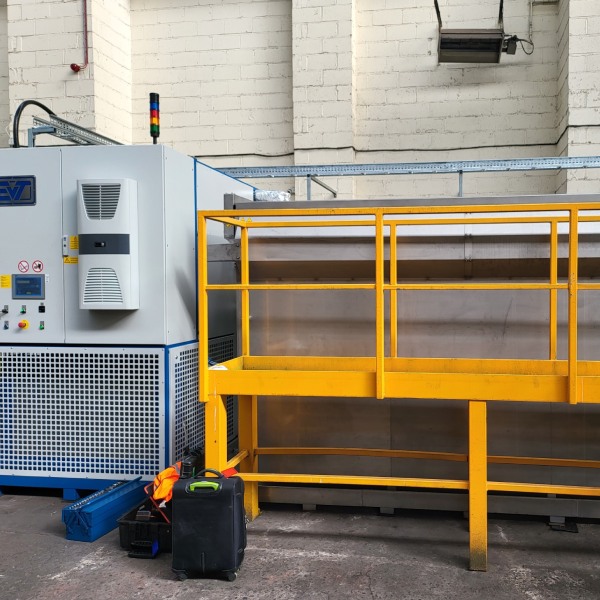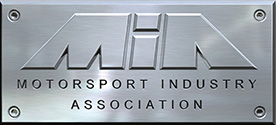METAL DEGREASING
Our Metal Degreasing Process
Alloy Heat Treatment utilise a SED compliant, vapour solvent degreaser, capable of cleaning and drying components up to 3m long and 500 kilos in weight, to aircraft industry standards.
Here at AHT we use Perchloroethylene Solvent, this is because it is a great chemical in cleaning and degreasing new metal helping prevent impurities from weakening the metal. This process is a mandatory requirement for Prime Contractors prior to the heat treatment process.
This can also be done as a stand alone service and we are happy to give you a free trial to other materials along with Aluminium.
What Is Metal Degreasing?
Metal degreasing is the process of removing oils, greases, and other contaminants from metal surfaces. This is often done to prepare the metal for thermal processing, painting, plating, or welding, as these contaminants can cause detriment to metallurgical properties, adhesion and process performance.
Methods for degreasing metal surfaces are: solvent cleaning, hot water cleaning, and ultrasonic cleaning.
Solvent based de-greasing is our bread & butter, the most tried and tested method that we have used throughout the course of our entire history as a company.

How Does Metal Degreasing Work?
Our vapour degreaser contains two tanks that are called Sumps, a metal basket, and bands of cooling coils. One sump boils the solvent and the second sump collects the solvent distillate.
Parts to be cleaned are placed in a metal basket that is lowered in the machine. The metal basket is placed above the boiling solvent and below cooling coils. As the solvent boils the vapours rise but don’t escape due to being trapped by a layer of refrigeration via cooling coils.
The vapor then condenses on the surface of the metal dissolving the contaminants. As the solvent drips off the parts it removes the soils with it.
This is a closed-loop process, so the solvent is cycled over-and-over again. The vapors go up into the cold trap, condense and run back down into the rinse sump. The rinse sump then overflows into the boil sump. The soil stays in the boil sump and will not travel with the vapor, and will not cross-contaminate parts or the rinse sump.
Commonly Used Metal Degreasing Methods
Solvent Degreasing
Solvent cleaning involves the use of a chemical solvent to dissolve and remove contaminants from the metal surface. Common solvents used for this purpose include trichloroethylene, perchloroethylene, and acetone. This method is effective at removing a wide range of contaminants, but it can be hazardous to handle and dispose of the used solvent, as many of these chemicals are toxic and can have negative effects on the environment. However, this process is made safer by using hermetically sealed degreasing plant and recycling systems, which has now become industry standard, to meet SED criteria.
Hot Water Cleaning
Hot water cleaning involves the use of high-pressure hot water to blast contaminants off the metal surface. This method is often used in conjunction with detergents to help loosen and remove the contaminants. Hot water cleaning is less hazardous than solvent cleaning, but it may not be as effective at removing certain types of contaminants, such as heavy oils and greases.
Ultra-Sonic Cleaning
Ultrasonic cleaning involves the use of high-frequency sound waves to create tiny bubbles in a cleaning solution. When the bubbles collapse, they create microscopic shockwaves that help to loosen and remove contaminants from the metal surface. This method is effective at removing a wide range of contaminants, and it can be used on delicate parts without causing damage. However, it can be expensive to set up and operate an ultrasonic cleaning system.
- Effective at removing oils, greases, and other contaminants from metal surfaces
- Can improve the performance and lifespan of metal components by preventing corrosion and wear
- Can improve the appearance of metal by removing dirt, grime, and other contaminants
- Prepares surfaces for chemical and thermal processes
- Can be harmful to the environment if not used or disposed of properly. Many metal degreasing agents contain volatile organic compounds (VOCs) that can contribute to air pollution, Can be dangerous to use if proper precautions are not taken.
- Many metal degreasing agents are flammable and can cause skin irritation or other adverse health effects if not handled carefully
– Can be expensive to use, especially if specialized equipment or protective gear is required - Can damage some types of metal if left on the surface for too long or used at too high of a concentration
- May require special handling and disposal due to their hazardous nature
Degreasing FAQ’s
Metal degreasing is vital in metallurgy and heat treatment as it prepares the metal surface for subsequent processes such as plating, welding, heat treating, or painting. It ensures optimal performance, quality, and longevity of the finished product.
Common methods of metal degreasing include solvent cleaning, alkaline cleaning, emulsion cleaning, vapor degreasing, ultrasonic cleaning, and water-based cleaning.
When selecting a metal degreasing method, consider factors such as the type of metal, the level of contamination, environmental considerations, process efficiency, safety, and cost-effectiveness.
Metal degreasing can be environmentally friendly by using biodegradable or low volatile organic compound (VOC) solvents and adopting water-based cleaning methods. Choosing environmentally friendly options is crucial for sustainable practices.
Yes, safety precautions should be followed when performing metal degreasing. This includes using protective equipment, ensuring proper ventilation, following handling guidelines for chemicals, and implementing appropriate waste disposal methods.
Metal degreasing should not significantly affect the mechanical properties of the metal if performed correctly. However, certain methods or harsh chemicals may have a slight impact, which is why proper process control is essential.
Metal degreasing primarily focuses on removing oils and greases. While it may help remove loose rust or corrosion, specialized methods such as abrasive cleaning or pickling are typically required for more significant corrosion removal.
Metal degreasing can be applied to various metals, including steel, aluminum, brass, copper, and other alloys. However, the specific degreasing method may vary based on the metal’s composition and surface characteristics. We specialize in the degreasing of aluminium and alloys.







